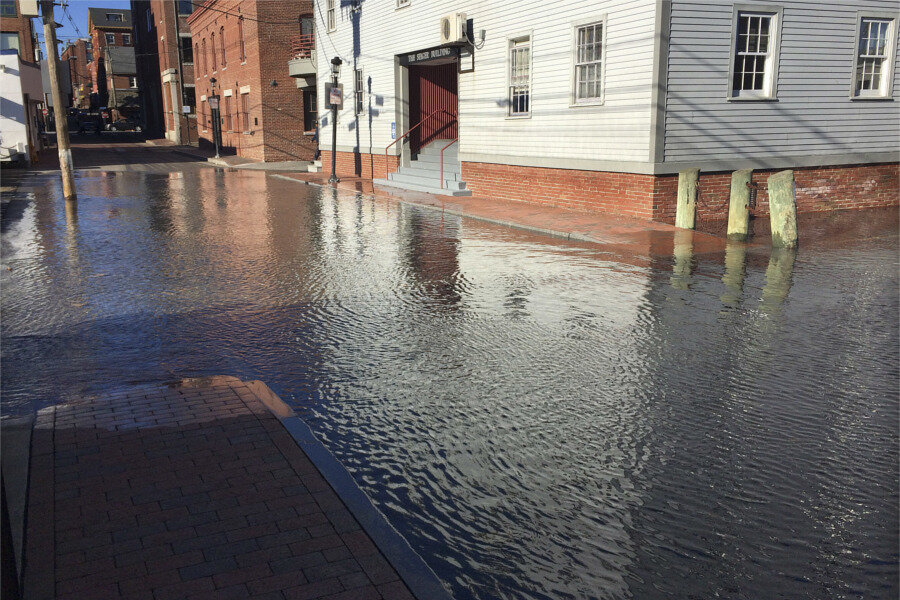How Trump's scale-back on NASA climate science could hurt Maine
Last week, policy advisors to President-elect Donald Trump announced that the administration would curb NASA’s role in climate research. As it happens, many of Maine’s scientists aren’t happy about that.
“We see NASA in an exploration role, in deep space research,” Bob Walker, space policy adviser for the Trump campaign, told the Guardian last week. “Earth-centric science is better placed at other agencies where it is their prime mission.”
But that’s not necessarily true. Earth monitoring would likely be delegated to agencies such as the National Oceanic and Atmospheric Administration (NOAA), which have less experience in space-based research and tighter budgets. And that presents a problem for the Pine Tree State, which is a national nerve center for earth science and climate research. Many Maine institutions – the University of Maine, the Gulf of Maine Research Institute, the Bigelow Laboratory for Ocean Sciences – rely heavily on NASA’s satellite data.
“The key measurements we use to discern change in organisms in the oceans – sea surface temperature, salinity, ocean color – they all pretty much exclusively fall under NASA,” Barney Balch, a biological oceanographer with the Bigelow Laboratory, told the Portland Press Herald. “Other countries use NASA’s expertise in these areas because they are so good at it.”
Without NASA’s work, Maine scientists say, it could be difficult to track environmental changes in the region and beyond, as the state has become something of a hub for climate research. Large-scale research initiatives, from marine algae monitoring to analysis of melting sea ice, might struggle to secure funding without sound data sets.
“We’re talking people losing jobs and grad students who can’t show up because there isn’t funding to take them on,” Andrew Thomas, a professor of oceanography at the University of Maine, told the Portland Press Herald. “There are millions of dollars that go into the local economy that won’t happen.”
Meanwhile, Maine is among the states most at-risk from anthropogenic climate change. With countless tiny inlets and coves, Maine has as much coastline as the rest of the eastern seaboard. Rising sea levels present clear hazards for coastal towns, and warming waters could kill or displace the near-shore ecosystems whose fish and crustaceans power much of Maine's economy.
Last month, the Arctic Council convened in Portland to discuss climatological changes in the region. Some of Maine’s coastal industries actually stood to benefit from recent ice melt, which has opened up new marine shipping routes north of the state, but that perk may soon wear thin.
In October, The Christian Science Monitor reported:
This warming could also hurt the same industries that benefit most from the Arctic ice melt. Rising temperatures and ocean acidification could cause fish to relocate from the coast of Maine, said researcher Paty Matrai of Bigelow Laboratory for Ocean Sciences. At the forum, speakers urged Maine residents and legislators to foster a sustainable relationship between industry and the Arctic region.
Like Mr. Trump, then-President George W. Bush also refocused NASA’s role in earth sciences – at one point, appointees eliminated the phrase, “To understand and protect our home planet” from the agency’s mission statement.
But at that time, climate change hadn’t yet been politicized to the degree it is now. And space-based Earth monitoring was a nonpartisan cornerstone in the national strategy. Under Bush, NASA’s 2006 Strategic Plan included three presidential initiatives: the Climate Change Research Initiative, Global Earth Observation, and the Oceans Action Plan.
Earth science is science in the national interest… NASA pioneers new global environmental observations and research, and works with other federal agencies to improve the operational services they provide to the Nation. These services include: weather forecasting; climate prediction; natural hazard assessment, prediction, and response; and environmental management, including air quality forecasting and land use assessment.







